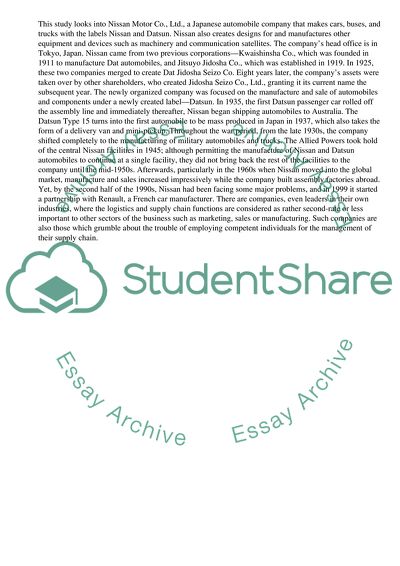Cite this document
(“Introduction on Nissan Motor Company and the Supply Chain for Nissan Research Paper”, n.d.)
Introduction on Nissan Motor Company and the Supply Chain for Nissan Research Paper. Retrieved from https://studentshare.org/management/1657149-introduction-on-nissan-motor-company-and-the-supply-chain-for-nissan-company
Introduction on Nissan Motor Company and the Supply Chain for Nissan Research Paper. Retrieved from https://studentshare.org/management/1657149-introduction-on-nissan-motor-company-and-the-supply-chain-for-nissan-company
(Introduction on Nissan Motor Company and the Supply Chain for Nissan Research Paper)
Introduction on Nissan Motor Company and the Supply Chain for Nissan Research Paper. https://studentshare.org/management/1657149-introduction-on-nissan-motor-company-and-the-supply-chain-for-nissan-company.
Introduction on Nissan Motor Company and the Supply Chain for Nissan Research Paper. https://studentshare.org/management/1657149-introduction-on-nissan-motor-company-and-the-supply-chain-for-nissan-company.
“Introduction on Nissan Motor Company and the Supply Chain for Nissan Research Paper”, n.d. https://studentshare.org/management/1657149-introduction-on-nissan-motor-company-and-the-supply-chain-for-nissan-company.


